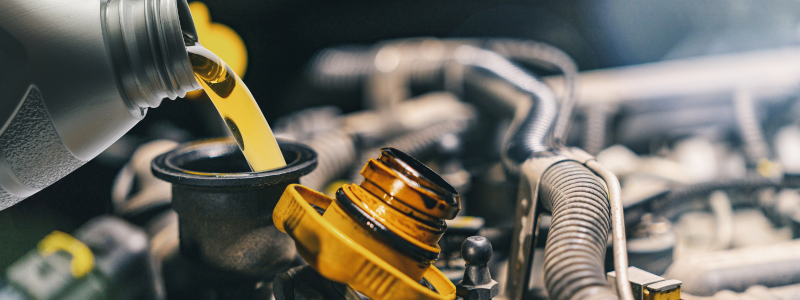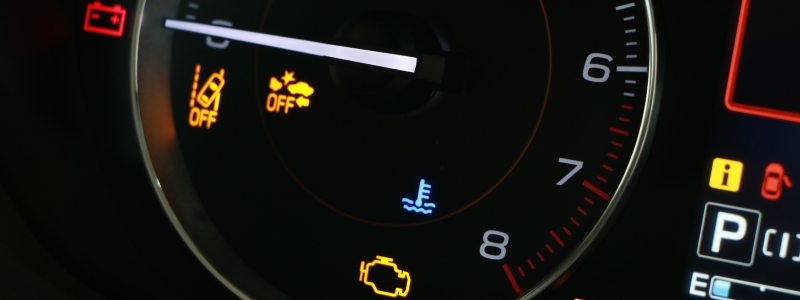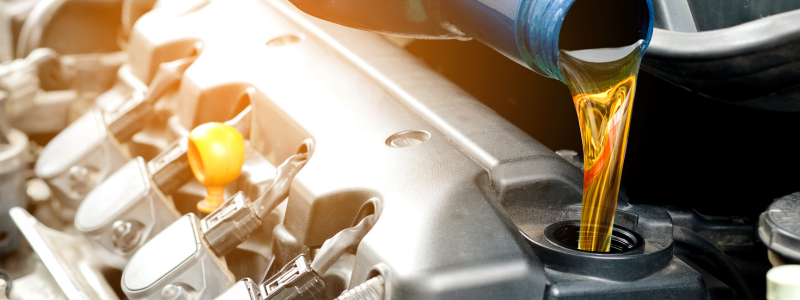What Oil Do I Need In My Car?
by Marsh Finance on Nov 8, 2024 3:32:31 PM
Every motorist knows that a car is more than just the upfront cost: they require general maintenance from servicing to MOTs, changing lights and wiper blades, checking tires to topping up screen wash and of course, adding or changing your oil.
Engine oil is crucial to your car. But why? From understanding what engine oil does to learning how much your car needs, let’s dive into the details of your car's oil.
👉 What is engine oil?
👉 What oil should I use for my car?
👉 What does my oil light mean in my car?
👉 How much oil does my car need?
👉 Checking your oil level
👉 How do I change my car oil?
👉 How often should I change my car oil?
👉 Ready for new wheels?
👉 Car oil FAQs

What Is Engine Oil? 🚗
Engine oil plays a vital role in keeping your car running smoothly. Acting as a lubricant, it prevents the engine’s moving parts from grinding against each other, which reduces wear and tear. It also helps keep the engine cool by absorbing heat and traps dirt and debris to keep the engine clean. Different oils exist, including conventional, synthetic, and blends of both.
Using the right type of oil affects your car’s performance and engine life. It’s as essential as putting the right fuel in your tank—so choosing wisely is a must.

What Oil Should I Use for My Car? 🧐
Finding the right oil for your specific car model can feel confusing, but it’s actually quite simple! One of the best things to ask is “What oil for my car by reg?” online!
To find your oil, use a car oil checker tool by entering your car’s registration number for a quick answer on the best oil type for your car, though we also recommend that you check your car’s manual, which will usually state the right oil grade, like 5W-30 or 0W-20, based on your engine’s needs.
If you’re still struggling with this decision, pop into your local garage for support.

What Does The Oil Light Mean In My Car? ⚠️
Seeing the oil light pop up on your dashboard can be worrying, but it’s a helpful warning. When this light appears, it could mean:
- Your oil level is low.
- Oil pressure has dropped.
- There’s a leak.
- The sensor is faulty.
Driving with the oil light on could damage your engine, so it’s important to act quickly. Pull over safely and wait a few minutes for your car to cool down before checking the oil level. If it’s low, top it up. If the level seems fine, there may be a problem with the oil pump, filter, or other components. Also, if there’s an oil leak, you may notice oil pooling under the car after it’s been parked.
If you’re unsure, it’s best to get a mechanic to check it out.

How Much Oil Does My Car Need? 📏
The amount of oil your car needs depends on the engine size. In general:
- Small cars with engines of around 1.0L need around 3 to 4 litres of oil.
- Medium cars with engines of around 1.5 to 2.0L need about 4 to 5 litres.
- Larger cars with engines over 2.0L might need 5 to 6 litres or more.
Check your car owner manual to confirm how much oil is needed for your specific model.

Checking Your Oil Level 🛠️
- Park on a flat surface and wait for the engine to cool.
- Open the bonnet and locate the dipstick (usually with a brightly coloured loop or hook).
- Pull the dipstick out, wipe it clean, and dip it back in.
- Pull it out again to check the level. The dipstick has two lines or dots at a set distance apart, which shows how much oil is ideally needed.
You want the oil to sit in the middle of these lines. So, when you dip the stick back in and pull it out again, you’ll see your oil levels and if it needs topping up.
If your car doesn’t have a dipstick, it may have a digital oil level checker accessible through the car’s info settings.

How Do I Change My Car Oil? 🔧
Changing your car’s oil might sound complicated, but with a little guidance and patience, it is possible to do at home. However, we do advise that you go to a qualified mechanic to do this.
If you are determined, here’s a general overview of how to do this. You’ll need:
- A spanner.
- An oil filter spanner.
- Drain pan or catch pan – large enough to catch all the oil.
- A funnel.
- Protective gloves.
- Jack and jack stand.
- The right type of oil.
- A new oil filter.
Before you even begin, start your engine for a few minutes to help warm the oil slightly and churn up any debris. After that:
- Jack up your car and locate the drain plug under the oil pan.
- Locate the drain plug - it looks like a large nut on your car's oil pan, just below the engine.
- Place the drain or catch pan underneath this plug.
- Sitting to one side, remove the plug. Oil should begin to drain into your pan
- Remove the oil cap: this is normally found at the top of the engine, and unscrew the oil filter (located near the oil pan). It should be labelled “filter”. Be careful doing this; the filter tends to hold some oil in it.
- Screw in the new oil filter.
- After the old oil is drained, replace the drain plug.
- Using the funnel, pour oil into the oil filter hole.
- Replace the oil filter cap and turn the car on for 30-60 seconds. Check you don’t have any leaks.
- Shut off the engine for 5-10 minutes. This is a great time to use the funnel again and place the old oil into a sealed container, ready to be transported to a specialist recycle centre.
- If there are still no leaks, lower your car off its jack and take it for a short test drive.
- Let the oil settle again for 5-10 minutes, and then check your dipstick again to see if it is at the optimal level for your car.

How Often Should I Change The Oil Of My Car? ⏰
Every car is different, though most manufacturers recommend every 5,000-7,500 miles unless it runs on fully synthetic oil, then it should be every 15,000 miles. Check your car manual for the manufacturer's recommendations.

Ready For New Wheels? 🚙
Keeping your oil fresh is one way to ensure your car lasts, but sometimes you’re just ready for an upgrade!
Car Oil FAQs
Signs include a dark or gritty appearance on the dipstick, the oil light turning on, or a burning smell.
This varies depending on your car model, the type of oil you use, and your driving habits. Most newer cars can go between 5,000 and 7,500 miles between oil changes, while older cars might need it every 3,000 miles. If in doubt, check your owner manual.
It’s best to avoid mixing oils. If you have synthetic oil in your car, stick with synthetic, as mixing different types can reduce performance.
Yes. The oil filter helps keep the oil clean by trapping contaminants. Replacing it ensures that your new oil stays as clean as possible for longer.
Overfilling can lead to excess oil pressure, which may damage the engine. If you’ve accidentally added too much, it’s best to drain some out or get a mechanic to do it.
You can find high-quality oils at most auto parts stores, online, or through your car manufacturer. Make sure to use the car oil checker or check your car’s manual to choose the right type.
- June 2025 (17)
- May 2025 (10)
- April 2025 (5)
- March 2025 (6)
- February 2025 (4)
- January 2025 (4)
- December 2024 (10)
- November 2024 (14)
- October 2024 (12)
- September 2024 (25)
- August 2024 (77)
- February 2024 (1)
- May 2023 (2)
- March 2023 (1)
- February 2023 (1)
- December 2022 (1)
- October 2022 (2)
- August 2022 (1)